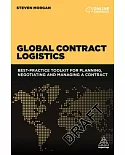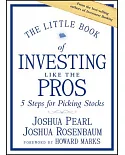Regulation A+: How the JOBS Act Creates Opportunities for Entrepreneurs and Investors explains how to raise money under new provisions in the recently enacted JOBS
Act. It will guide and advise executives of emerging growth companies, entrepreneurs, financial advisers, venture capitalists, investment bankers, securities lawyers, finance and MBA students,
and others on how to raise up to $50 million a year through streamlined regulations.
Signed by President Obama on April 5, 2012, Title IV of the JOBS Act amends the 1930s-era Regulation A, making it far easier for businesses to raise growth capital through public offerings.
It is, in effect, a new type of IPO but with much less regulation and cost.
Regulation A+: How the JOBS Act Creates Opportunities for Entrepreneurs and Investors spells out new processes that can and will have a dramatic impact on how companies
obtain growth capital to create new jobs and bolster returns for investors. Some financial gurus believe that the new law, dubbed Regulation “A+” due to the enhancements, will usher in a
revolutionary period of growth and innovation comparable to our largest past economic expansions.
To date, much of the commentary on the JOBS Act has focused on Title III, which allows broader use of crowdfunding to raise up to $1 million per year. However, many entrepreneurs and
economists believe that new changes to Regulation A
will have a much greater impact oninnovation and job creation. The best part? Regulation A+ lifts many constraints on soliciting funds and trading new stock issues. Among other things,
readers of this book will learn how to take advantage of these provisions:
- Regulation A+ permits companies to raise up to $50 million, a tenfold increase over the old limit of $5 million, and much more than the crowdfunding provisions of the JOBS Act
($1 million).
- Regulation A+ allows companies to market IPOs to more people than just “accredited investors” and makes it easier to get the word out on offerings.
- Regulation A+ allows certain companies to avoid the SEC periodic reporting regimen (Form 10-K, Form 10-Q, Form 8-K, and proxy statements), provided that the number of
shareholders is kept below revised thresholds.
- Regulation A+ exempts certain companies from many onerous and costly compliance requirements, including Sarbanes-Oxley.
In short, Regulation A+ greatly simplifies the capital-raising process, making it easier to grow companies, create jobs, and reward investors.





















